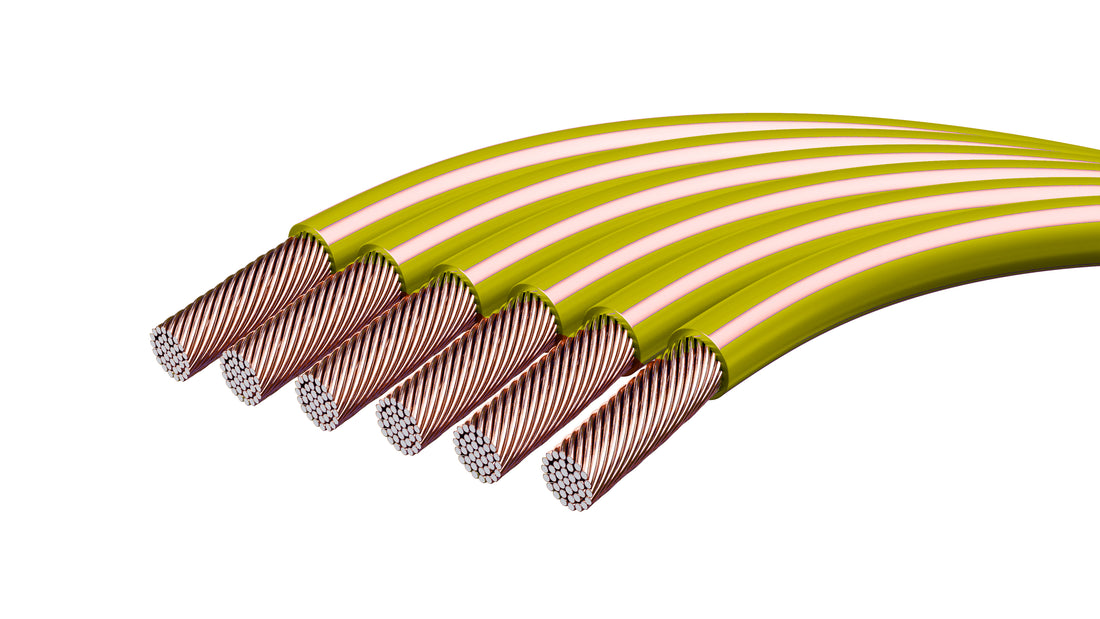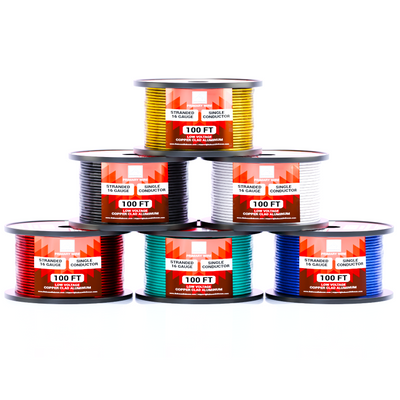
What Does the Yellow Wire Mean? A Guide to Yellow Wire
Share
Introduction
If you've ever looked at the wiring in your home or tried to install a new light fixture, you've probably noticed the different colored wires. Each wire has a specific purpose and knowing what each color means can be crucial for a successful electrical installation. In this guide, we'll be focusing on the yellow wire. What does the yellow wire mean? Is it a hot wire, a ground wire, or something else entirely? Join us as we unravel the mystery of the yellow wire and provide you with a comprehensive guide to understanding its purpose in electrical systems.
Don't forget to look at our other articles:
- What Does The Red Wire Mean?
- What Does The Blue Wire Mean?
- What Does The Green Wire Mean?
- What Does The Black Wire Mean?
- What Does The White Wire Mean?
How Do I Identify a Yellow Wire? A Simple Guide
Yellow wires typically serve as switch legs, responsible for carrying power from a switch to a load. In certain systems, they may also act as travelers within a three-way switch configuration, linking multiple switches together. To ensure safety and accuracy, always employ a voltage tester to verify the function of a yellow wire before handling it, given that color coding can vary across installations. Additionally, consulting the wiring diagram specific to your device or setup is crucial for correctly identifying and understanding the yellow wire's purpose. This careful approach helps prevent electrical mishaps and ensures that your wiring tasks are completed safely and effectively.

Understanding What the Yellow Wire Means
In electrical systems, the yellow wire is frequently designated to indicate live or hot wires, signaling that it carries current from the power source. This color coding is not limited to household circuits but extends to automotive wiring, where the yellow wire often connects to crucial components like the ignition system or battery, ensuring the vehicle's proper operation. Moreover, home automation systems utilize yellow wires to signify data or communication lines, playing a pivotal role in the seamless interaction between various smart devices. In HVAC systems, the yellow wire takes on yet another vital function, typically controlling the compressor and cooling mechanisms. Regardless of the specific application, understanding the role of the yellow wire is essential for safe and effective electrical work.

Why the Color of Your Wire Matters: Focus on Yellow
Yellow wires frequently serve versatile roles across various electrical systems, enhancing both functionality and safety. Often employed in switched outlets, yellow wires carry power that toggles with the flip of a switch, making them essential for controlling devices like lamps and fans. In automotive wiring, the yellow wire typically signifies a crucial 12V ignition wire, integral to the vehicle's starting system and overall operation. Additionally, lighting circuits, especially those involving ceiling fans and light fixtures, commonly utilize yellow wires to manage power flow. Adhering to correct wire color usage, such as implementing yellow wires where appropriate, is not only a matter of safety but also compliance with electrical codes, ensuring that installations meet regulatory standards and operate reliably.

Common Uses of Yellow Wires in Electrical Systems
Yellow wires are pivotal in various electrical systems, serving multiple critical functions. Frequently utilized as switch legs in lighting circuits, they connect switches to lighting fixtures, ensuring seamless control over illumination. In 220-volt circuits, yellow wires act as live conductors, delivering power to heavy-duty appliances like air conditioners and ovens, underscoring their importance in household and commercial settings. Within conduit installations, these wires play a crucial role by distinguishing hot wires from other phases, thereby enhancing safety and clarity. Moreover, yellow wires are indispensable in complex three-way and four-way switch configurations, where they link traveler terminals to guarantee the proper operation of interconnected switches. With such versatile applications, yellow wires are integral to efficient and safe electrical installations.

Safety Tips for Handling Yellow Wires
Before handling yellow wires, always turn off the power to prevent electrical shock.
Use insulated tools
Using insulated tools and wearing rubber-soled shoes can further minimize the risk of electric shock, providing an additional layer of protection.
Label properly
Clearly labeling yellow wires is essential to avoid confusion and ensure proper identification during maintenance or repair tasks.
Consult an expert
If there is any uncertainty about the connections or the purpose of yellow wires in your electrical system, it is advisable to consult a professional electrician. This careful approach helps safeguard against potential hazards and ensures that electrical work is performed correctly and safely.
Conclusion
In conclusion, understanding the role and significance of yellow wires in various electrical systems is crucial for both safety and functionality. Whether serving as switch legs in lighting circuits, live conductors in high-voltage applications, or key components in automotive and home automation wiring, yellow wires carry critical responsibilities. Proper identification using voltage testers and wiring diagrams, along with adherence to safety protocols, ensures that these wires are handled correctly and safely. By appreciating the versatility and importance of yellow wires, homeowners, DIY enthusiasts, and professionals alike can achieve reliable, code-compliant, and hazard-free electrical installations.








